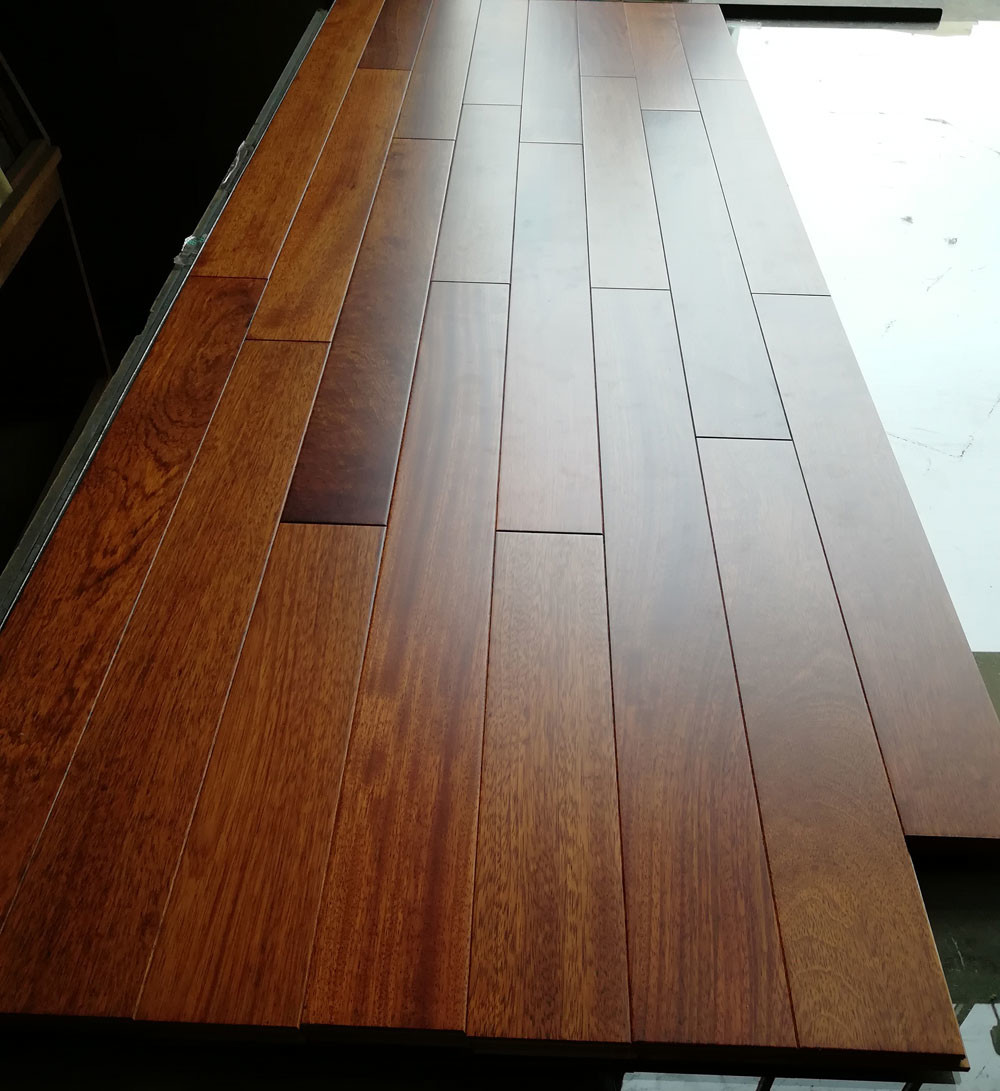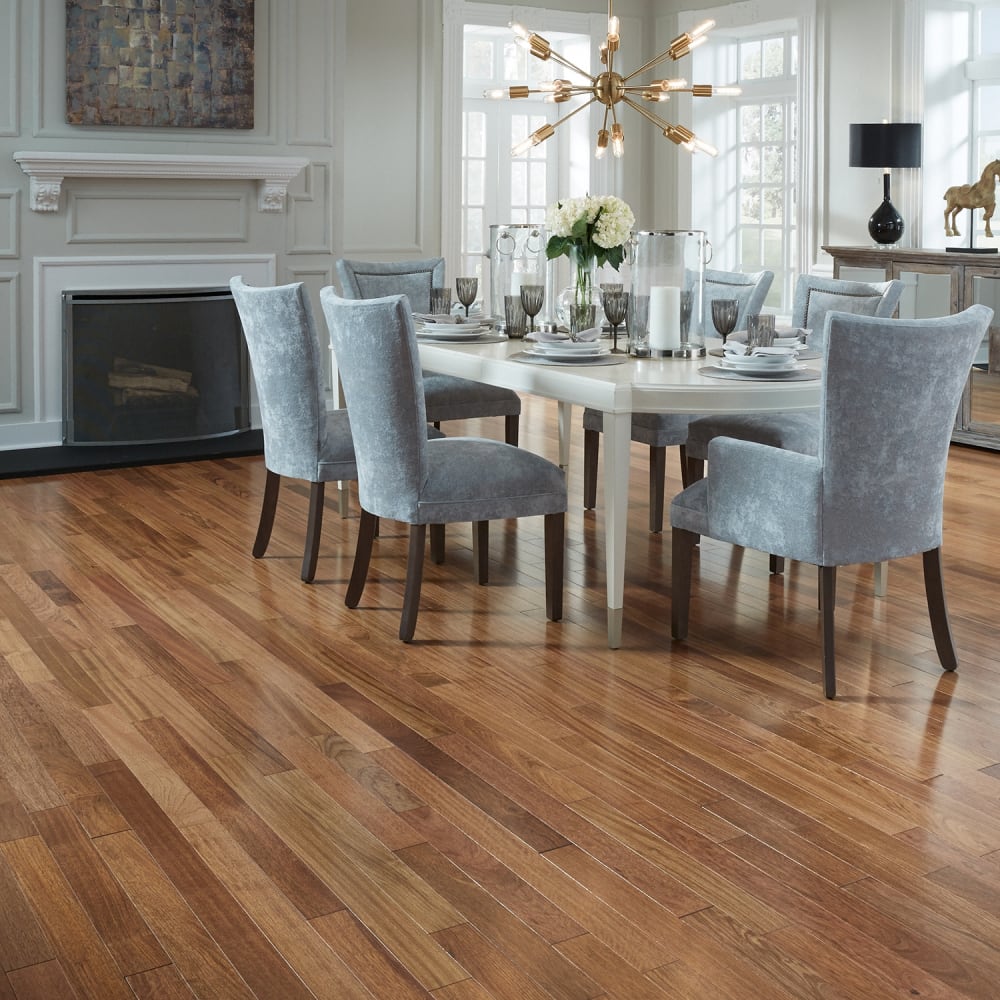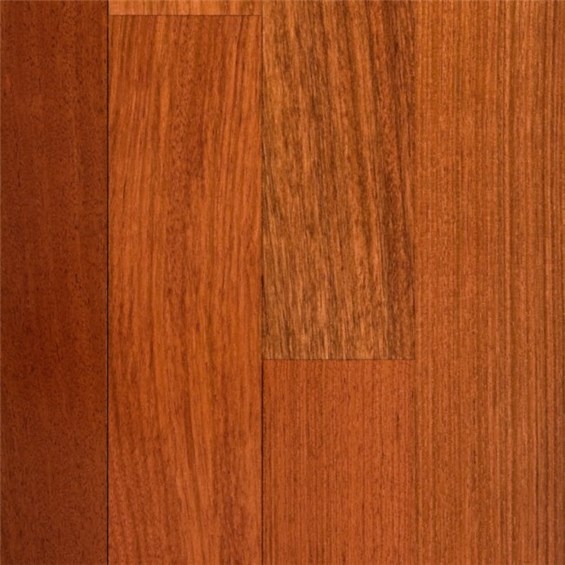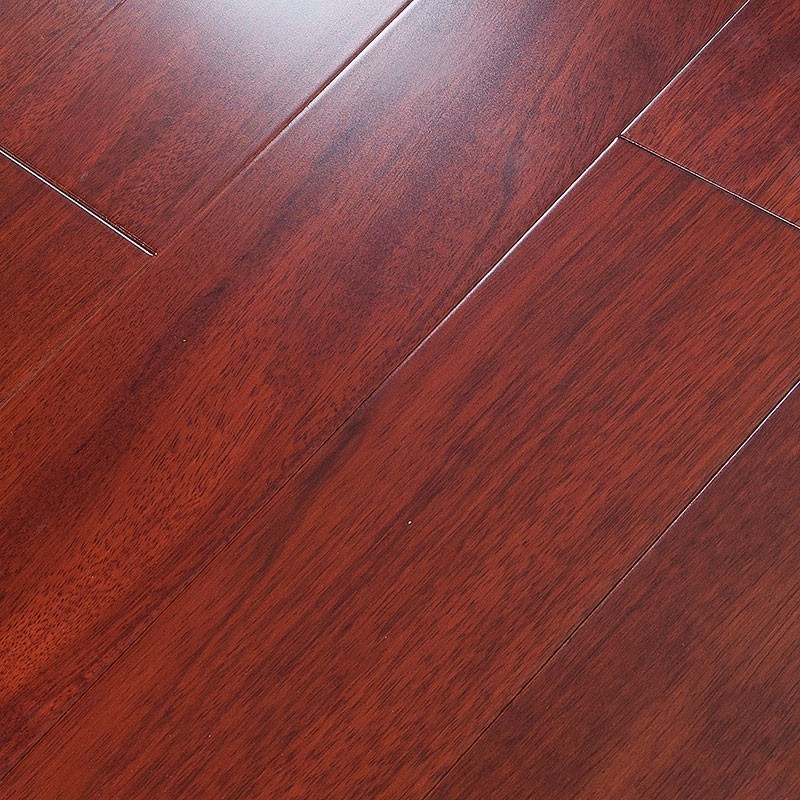Brazilian Cherry Hardwood Flooring
Brazilian Cherry hardwood flooring, known for its rich, reddish-brown hue and exceptional durability, is a popular choice for homeowners seeking to add a touch of luxury and warmth to their interiors. This article will discuss everything you need to know about Brazilian Cherry hardwood flooring, from its characteristics and benefits to installation, maintenance, and common mistakes to avoid.
Characteristics of Brazilian Cherry Hardwood Flooring
- Origin and Species: Brazilian Cherry, also known as Jatoba, is a tropical hardwood species native to Central and South America. The trees are primarily found in Brazil, which is why the wood is often referred to as Brazilian Cherry. This species is scientifically known as Hymenaea courbaril.
- Appearance and Color: One of the most striking features of Brazilian Cherry is its vibrant color. Freshly milled wood typically exhibits a salmon-red hue, which deepens over time to a rich, reddish-brown with subtle orange or golden undertones. This natural color variation can create a stunning visual effect in any room.
- Grain and Texture: Brazilian Cherry hardwood has a medium to coarse texture with an interlocking grain pattern. This unique grain structure not only adds to its aesthetic appeal but also contributes to its strength and durability. The wood’s natural luster enhances its overall appearance, making it a highly desirable flooring option.
- Hardness and Durability: On the Janka hardness scale, Brazilian Cherry ranks significantly higher than many domestic hardwoods, scoring around 2350. This makes it one of the hardest and most durable hardwoods available, capable of withstanding heavy foot traffic and resisting dents and scratches.
- Stability and Density: Brazilian Cherry is known for its stability, which means it is less likely to expand or contract with changes in humidity and temperature. Its high density also contributes to its resilience, making it a suitable choice for various environments, including those with fluctuating climatic conditions.
- Environmental Considerations: While Brazilian Cherry is prized for its beauty and durability, it is essential to consider the environmental impact of harvesting this tropical hardwood. Responsible sourcing and certification, such as from the Forest Stewardship Council (FSC), can help ensure that the wood is harvested sustainably.

Benefits of Brazilian Cherry Hardwood Flooring
Aesthetic Appeal
The rich, deep colors and unique grain patterns of Brazilian Cherry hardwood flooring can transform any space into a luxurious and inviting environment. Its natural beauty can complement a wide range of interior design styles, from traditional to contemporary.
Longevity
Due to its hardness and durability, Brazilian Cherry hardwood flooring can last for decades with proper care and maintenance. This long lifespan makes it a cost-effective investment, as it reduces the need for frequent replacements compared to other flooring options.
Increased Property Value
Installing Brazilian Cherry hardwood flooring can significantly increase the value of your home. Potential buyers often view hardwood floors as a desirable feature, and the exotic appeal of Brazilian Cherry can make your property stand out in the real estate market.
Easy Maintenance
Brazilian Cherry hardwood flooring is relatively easy to maintain. Regular sweeping and occasional mopping with a damp cloth are usually sufficient to keep the floors clean. Additionally, its hardness helps prevent scratches and dents, reducing the need for frequent repairs.
Versatility
The rich colors of Brazilian Cherry hardwood can pair well with various furniture styles and color schemes. Whether you’re looking to create a cozy, rustic atmosphere or a sleek, modern look, this flooring option can adapt to your design preferences.
Hypoallergenic Properties
Hardwood flooring, in general, is an excellent choice for individuals with allergies. Unlike carpets, which can trap dust, pollen, and pet dander, hardwood floors are easier to clean and do not harbor allergens, contributing to a healthier indoor environment.
Installation Process
Pre-Installation Preparation
Before installing Brazilian Cherry hardwood flooring, it is crucial to ensure that the subfloor is clean, dry, and level. Any irregularities can affect the installation and longevity of the flooring. Additionally, the wood should be acclimated to the room’s temperature and humidity for at least a week before installation to prevent warping.
Tools and Materials Needed
Installing Brazilian Cherry hardwood flooring requires specific tools and materials, including a tape measure, saw, hammer, nails or staples, adhesive (if using a glue-down method), and a moisture barrier. Using the right tools and materials is essential for a successful installation.
Installation Methods
There are three primary methods for installing Brazilian Cherry hardwood flooring: nail-down, glue-down, and floating. The nail-down method involves nailing the planks directly to the subfloor, while the glue-down method uses adhesive to secure the planks. The floating method involves interlocking the planks without attaching them to the subfloor, allowing for slight movement.
Step-by-Step Guide
- Prepare the Subfloor: Clean and level the subfloor. Install a moisture barrier if necessary.
- Acclimate the Wood: Let the wood acclimate to the room for at least a week.
- Layout Planning: Plan the layout to ensure a balanced and aesthetically pleasing appearance.
- Begin Installation: Start from one corner of the room, leaving a small gap for expansion. Use the chosen installation method (nail-down, glue-down, or floating).
- Cut and Fit Planks: Cut the planks to fit around obstacles and ensure a snug fit.
- Finish the Installation: Once all planks are installed, add baseboards and trim to cover the expansion gaps.
Post-Installation Steps
After installation, allow the floor to settle for a few days before moving furniture back into the room. It is also recommended to apply a finish or sealant to protect the wood and enhance its appearance.
Professional vs. DIY Installation
While DIY installation can save money, it requires a certain level of skill and experience. Hiring a professional can ensure a flawless installation and potentially extend the life of your flooring. Weigh the pros and cons of each approach before deciding.
Maintenance and Care
Regular Cleaning
To maintain the beauty of Brazilian Cherry hardwood flooring, regular cleaning is essential. Sweep or vacuum the floor daily to remove dust and dirt. Use a damp mop for a deeper clean, but avoid excessive water, which can damage the wood.
Preventative Measures
Place mats at entryways to reduce the amount of dirt and moisture tracked onto the floor. Use furniture pads to prevent scratches and dents, and avoid wearing high heels on the flooring, as they can cause damage.
Dealing with Spills and Stains
Wipe up spills immediately to prevent staining and water damage. For stubborn stains, use a hardwood floor cleaner recommended by the manufacturer. Avoid using harsh chemicals or abrasive cleaners, as they can damage the finish.
Refinishing and Repairs
Over time, the finish on Brazilian Cherry hardwood flooring may wear down. Refinishing involves sanding the surface and applying a new coat of finish to restore its original beauty. For deep scratches or gouges, consider hiring a professional to perform repairs.
Humidity and Temperature Control
Maintaining a consistent indoor humidity level (between 35-55%) can help prevent the wood from expanding or contracting. Use a humidifier in dry climates and a dehumidifier in humid environments to regulate moisture levels.
Long-Term Care Tips
To keep your Brazilian Cherry hardwood flooring looking its best, follow these long-term care tips:
- Rearrange Furniture Periodically: This prevents uneven wear and fading.
- Use Area Rugs: Protect high-traffic areas with rugs to reduce wear and tear.
- Monitor Indoor Climate: Consistent temperature and humidity levels prevent wood movement.
- Avoid Direct Sunlight: Use curtains or blinds to protect the floor from UV rays, which can cause fading.
Common Mistakes to Avoid
Incorrect Installation
Improper installation can lead to various issues, including gaps, buckling, and uneven surfaces. Ensure that the subfloor is properly prepared and use the correct installation method for your specific flooring.
Skipping Acclimation
Failing to acclimate the wood to the room’s environment can result in warping and gaps. Always allow the wood to adjust to the temperature and humidity of the installation site before beginning the installation process.
Using the Wrong Cleaning Products
Harsh chemicals and abrasive cleaners can damage the finish of Brazilian Cherry hardwood flooring. Use cleaning products specifically designed for hardwood floors and follow the manufacturer’s recommendations.
Ignoring Moisture Issues
Moisture is the enemy of hardwood flooring. Ensure that the subfloor is dry before installation and address any moisture issues in your home, such as leaks or high humidity, to prevent damage to the flooring.
Overlooking Maintenance
Regular maintenance is crucial for preserving the beauty and longevity of Brazilian Cherry hardwood flooring. Neglecting cleaning and preventative measures can lead to premature wear and costly repairs.
Not Protecting the Floor from Furniture
Furniture can cause scratches and dents in hardwood flooring. Use furniture pads and avoid dragging heavy items across the floor. Lift and carry furniture when moving it to prevent damage.
How does Brazilian Cherry hardwood flooring compare to other hardwoods in terms of durability?
Brazilian Cherry hardwood flooring is one of the most durable options available. With a Janka hardness rating of around 2350, it is significantly harder than many domestic hardwoods such as oak, maple, and walnut. This exceptional hardness makes it highly resistant to scratches, dents, and wear, making it ideal for high-traffic areas in both residential and commercial settings. Its durability, coupled with its stunning aesthetic appeal, often makes it a preferred choice for those looking to invest in long-lasting, high-quality flooring.
Is Brazilian Cherry hardwood flooring suitable for all areas of the home?
Brazilian Cherry hardwood flooring is versatile and can be used in various areas of the home, including living rooms, dining rooms, bedrooms, and hallways. However, it is not recommended for use in moisture-prone areas such as bathrooms, kitchens, or basements due to the risk of water damage. The high density and hardness of the wood make it suitable for areas with heavy foot traffic, but it is essential to control the indoor humidity levels to prevent expansion and contraction. Proper maintenance and preventative measures can help ensure its suitability and longevity in different parts of the home.
How does Brazilian Cherry hardwood flooring change color over time?
Brazilian Cherry hardwood flooring undergoes a significant color transformation over time. When first installed, the wood typically exhibits a salmon-red hue. With exposure to sunlight and air, it gradually deepens to a rich, reddish-brown color with darker, more vibrant tones. This natural aging process, known as oxidation, is one of the unique characteristics of Brazilian Cherry. To manage this color change and maintain an even appearance, it is advisable to periodically rearrange furniture and use window coverings to protect the floor from direct sunlight.
What are the best practices for cleaning and maintaining Brazilian Cherry hardwood flooring?
Regular cleaning and maintenance are crucial for preserving the beauty and longevity of Brazilian Cherry hardwood flooring. Daily sweeping or vacuuming helps remove dust and dirt, while occasional mopping with a damp cloth can address more stubborn grime. Avoid using excessive water and harsh chemicals, as they can damage the wood and its finish. Place mats at entryways, use furniture pads and maintain consistent indoor humidity levels to protect the floor from scratches, dents, and warping. Additionally, consider refinishing the floor every few years to restore its original luster and address any signs of wear.
Can Brazilian Cherry hardwood flooring be refinished, and how often should this be done?
Yes, Brazilian Cherry hardwood flooring can be refinished to restore its appearance and prolong its lifespan. The frequency of refinishing depends on the level of wear and the thickness of the wood’s top layer. In general, it is recommended to refinish the floor every 7-10 years, or sooner if it shows signs of significant wear, such as deep scratches, dents, or a dull surface. Refinishing involves sanding down the top layer of the wood and applying a new finish, which can bring back the floor’s original beauty and provide additional protection against future damage.
Is Brazilian Cherry hardwood flooring environmentally friendly?
The environmental impact of Brazilian Cherry hardwood flooring depends on the sourcing practices. It is crucial to choose wood that is harvested sustainably and certified by organizations such as the Forest Stewardship Council (FSC). FSC certification ensures that the wood comes from responsibly managed forests that meet strict environmental, social, and economic standards. By opting for FSC-certified Brazilian Cherry, you can enjoy the benefits of this beautiful hardwood while supporting sustainable forestry practices and minimizing environmental harm. Additionally, Brazilian Cherry’s durability and long lifespan contribute to its overall sustainability, as it reduces the need for frequent replacements and the associated environmental costs.
Bellawood 3/4 in. Select Brazilian Cherry Solid Hardwood Flooring 3.25 in. Wide
3 1/4″ x 3/4″ Brazilian Cherry Clear Grade Prefinished Solid Wood Floors
Woods of Distinction Floors Brazilian Cherry Jatoba Cherry
Inspirasi Popular Cherry Hardwood Flooring
Related Posts:








